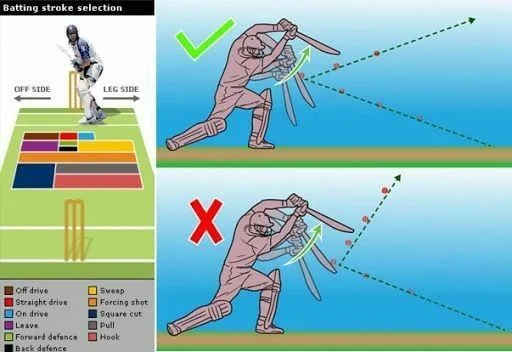Introduction
Cricket is a game of skill, timing, and precision. If you’re a beginner looking to improve your batting technique, starting with the fundamentals is key. A strong foundation in stance, grip, and footwork can significantly enhance your performance on the field. In this guide, we’ll walk you through essential cricket batting tips designed especially for beginners.cricket batting tips for beginners The right equipment can make practice sessions more effective. Try using the Vinox Cricket Bat for better control and improved shot-making during nets and drills.
Stance and Grip: The Foundation of Every Great Shot
Getting your stance and grip right is the first step toward becoming a confident batter.
Sideways Stance
Stand side-on to the bowler with your feet shoulder-width apart. Your front shoulder should face the bowler, and your head should be still and focused.
Hand Position
Hold the bat with a V-grip, formed between your thumb and index finger. Your top hand provides control, while the bottom hand adds power.
Head and Eyes
Keep your head steady and eyes level. Always watch the bowler’s hand to pick up the ball early.
Bend Your Knees
Maintain a slight bend in your knees to stay agile and balanced. This posture allows quick movement and better shot selection.
Footwork: Move Smart, Play Better
Good footwork lets you reach the ball efficiently and play both defensive and attacking shots.
Stride
Take small, confident steps toward the pitch of the ball. Avoid lunging or overreaching.
Weight Transfer
Shift your weight smoothly between your front and back foot depending on the ball’s length. Front foot for fuller deliveries, back foot for shorter ones.
Stay Balanced
Balance is everything in batting. Always return to a neutral stance after playing your shot. cricket batting tips for beginners
Bat Swing: Timing Over Power
How you swing the bat impacts your timing, control, and ability to score runs.
Backlift
Lift your bat back toward the stumps or slightly outward in preparation for the shot. A good backlift gives you more power and timing.
Downswing
Bring the bat down in a straight line toward the ball. Keep your elbow high and hands close to your body for better control.
Follow Through
Complete the shot with a smooth follow-through. Don’t stop the bat abruptly—let it flow naturally in the direction of your shot.
Practice and Drills: Train Smart, Play Hard
Repetition and discipline are crucial for improvement.
Regular Practice
Commit to practicing consistently. Even 30 minutes daily can lead to noticeable progress.
Net Practice
Spend time in the nets to simulate match conditions. Focus on different types of bowlers and deliveries.
Footwork Drills
Use cones or ladders to improve agility and foot movement. Practice coming down the pitch and moving back quickly.
Timing Drills
Work on playing the ball late and watching it closely. Use soft balls for initial timing drills.
Watch and Learn
Study professional cricketers and how they handle different situations. Pay attention to their footwork, stance, and shot selection.
Final Thoughts
Becoming a great batter in cricket starts with mastering the basics. By focusing on your stance, grip, footwork, and bat swing, and combining that with consistent practice and smart drills, you’ll be well on your way to becoming a dependable player. Remember, even the best cricketers were once beginners—your journey starts now!





 No products in the cart.
No products in the cart.